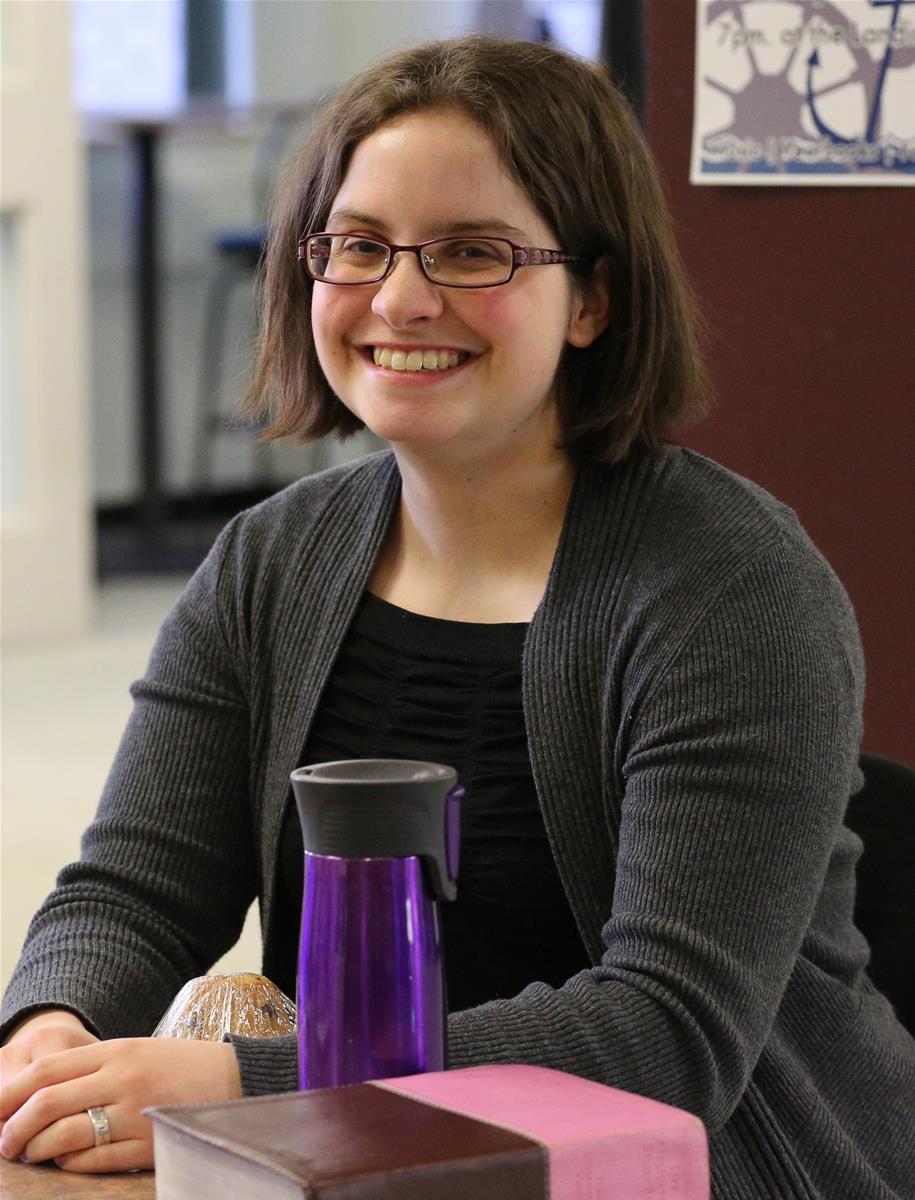Seeing the signs: TESOL student helps English literacy students recognize road signs

Thanks to classroom materials developed by TESOL graduate Melanie Goode, a group of English literacy students in Saskatoon are recognizing the signs – traffic signs to be exact.
As a student in this year’s TESOL materials development course, Goode was paired with Briercrest alumnus Gina Bak, who works as a literacy instructor at the Saskatchewan Intercultural Association. Goode’s assignment was to design specific course materials that Bak needed.
“I asked Melanie to create flashcards and worksheets that would help my students learn Canadian road signs,” Bak said. “Most of my students are in process of taking their SGI examination for their class 7 license, so I thought teaching road signs would be appropriate.”
The students in Bak’s classroom are at a pre-beginner level of English literacy.
“They are people who are coming from countries where they never even learned to read or write in their own language,” Goode explained. “They don’t know how to hold a pen or type on a computer.”
This basic level of literacy made developing materials a bit more challenging for Goode.
“It’s a lot of pictures, tracing letters – kindergarten type stuff,” she said. “But they’re adults, so you don’t want to make them feel stupid.”
David Catterick, Briercrest assistant professor of applied linguistics: TESOL, explained some specific requirements for the materials that students like Goode develop for their assigned teacher.
“The specific thing is it’s not connected with anything they can pull from a book,” he said. “We say (to TESOL teachers) ‘Dream and if you can imagine materials in your context where you say, ‘If I only had this,’ we can create it for you for free.’ (TESOL students) will use their skills and create that by the end of the semester.”
Goode was responsible for making 75 minutes of materials on road signs for Bak’s class.
“I came up with a list of 18 different road signs that are very common, like the speed limit sign, stop sign, yield sign, crosswalk, school bike games Kid games zone and all that stuff,” Goode explained. “I made little flash cards so that they had a picture of each one of these and then I made vocabulary cards that went with them so (students) could match the two together and figure out how to spell the word and pronounce the word.”
Goode also developed a map exercise for the class revolving around the area directly surrounding the Saskatchewan Cultural Association.
“I had googled the street view to put the stop signs and stop lights at the right places,” she explained. “I had them draw lines on the different roads and different destinations on that map and they had to explain how many stop signs they saw and how many stop lights and things like that. Then they had to practice giving the directions how to get from this place to that place which is also very practical.”
Bak’s English literacy students responded well to Goode’s materials.
“They were thrilled to have worksheets and flashcards to learn the road signs,” Bak said. “They loved the class.”
Goode says the materials she developed, which will be copyrighted to her and the Saskatchewan Cultural Association, took about 14 hours of her time.
“David (Catterick) likes to give us the reusability principle,” she said. “The more time it takes, the more you should be able to use it. So you never want to spend 14 hours on a set of materials you’re only going to use once in a one-hour class and never use again. It’s not a good use of your time.”
The TESOL student feels good about the reusability potential of her project.
“It’s not specific to one time period,” she said. “The reusability principle in this case is great because it’s reusable for many years to come.”
Goode graduated from Briercrest on April 17 with two BA degrees – one in TESOL and another in Humanities. She had mixed feelings about finishing her time at Briercrest.
“I’m one paragraph away from finishing my last paper,” she exclaimed at her interview during finals week. “I was putting off my last assignment because once I’m done with this assignment I’m done at Briercrest. It’s been such a big part of my life.”
